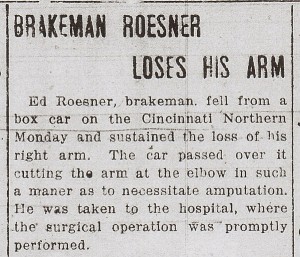
The Daily Standard, 27 April 1917, page 7
A few weeks ago I blogged about my 2011 Genealogy Goals. I have already had positive results from one of those goals—my goal to review information that I had already collected. By looking through documents I have here at home I was able to get some clues for additional research about Edward Roesner’s railroad accident in which he lost part of his right arm. This is something we, as researchers, should remember to do–look back through the documents and information we have already gathered and study them from time to time. There may be clues that we missed the first time around or information that we never followed up on. We may have collected some new information in the meantime, and when all the information is put together, we may be able to draw new conclusions for further research.
My research goal for this project was to find out more about Edward Roesner’s railroad accident. I had what I thought was an approximate date of his accident from his Railroad Retirement Board file. As I mentioned in last week’s blog, those records showed that he stopped working in April 1917 and that he did not work for the railroad for seven years. He resumed rail work in 1924. Something must have happened in 1917. He had been a brakeman since 1914, a physical and dangerous job. He returned to work as a crossing watchman in 1924, a job that was much less dangerous. It looked like his railroad accident might have occurred in April 1917. He was employed by the Cincinnati Northern Railroad at the time. The Cincinnati Northern Railroad (1894-1938) stretched from Franklin, Ohio, (near Cincinnati) north to Jackson, Michigan, a distance of about 186 miles. (Wikipedia) Their trains ran through both Celina and Van Wert.
Next I looked at Edward’s WW1 Draft Registration card on Ancestry.com. The card was dated 5 June 1917. In answer to the question, Has person lost arm, leg, hand, foot, or both eyes or is he otherwise disabled, Edward answered “one hand.” This really narrowed down the time period in which the accident occurred. He had lost his arm before 5 June 1917. So, the April 1917 time period was looking very good as a place to start my search. Edward’s daughter, Louise, had told me the accident occurred in Celina. I would start there, looking through the April 1917 issues of the only newspaper in Celina, The Daily Standard, a weekly paper at that time. I looked through newspaper images on microfilm at the Mercer County Library in Celina and within minutes I found a newspaper item about Edward’s accident in their last issue for April 1917. That was an exciting find!
I learned that Edward’s railroad accident occurred 23 April 1917 in Celina. According to the newspaper article, Edward fell from a box car and the railroad car passed over his right arm at the elbow. They had to amputate his arm immediately. The accident occurred about 1:30 as the southbound Cincinnati Northern freight train No. 75 was passing between Warren and Logan Streets in Celina. Louise had told me that the accident occurred near what was once the creamery on Warren Street.
The newspaper article about the accident also said that Ed lived in Van Wert and that he was married! Married? He did not marry Helen Lee until 1921. This will need some further research. However, Edward stated that he was single on his WWI Draft Registration card, dated about six weeks after the accident. He also stated that he had never been married on his marriage license to Helen Lee. The newspaper probably got that information wrong, but I will still look for a marriage record before 1917.
What about Edward’s job as a brakeman? The brakeman on a train had a dangerous job. According to American Rails, the brakeman held one of the most dangerous occupations on the freight train, or anywhere on the railroad. Fela Law Help describes the job: the railroad brakeman worked with a conductor and an engineer, making up a freight and yard crew. Railroad brakemen usually helped with the coupling and uncoupling of cars as well as operating switches as the cars were dropped off and picked up. And, according to Wikipedia, the brakeman was a member of a railroad train’s crew responsible for assisting with braking a train when the conductor wanted the train to slow down. The brakemen rode in the caboose, the last car in the train, which was built specially to allow a crew member to apply the brakes of the caboose quickly and easily, which would help to slow the train. Brakemen were also required to watch the train when it was underway to look for signs of hot box, (a dangerous overheating of axles,) as well as for people trying to ride the train for free, and cargo shifting or falling off.
Ed’s daughter, Louise, said that after his accident the railroad gave him a lifetime job as a crossing watchman on Logan Street in Celina. According to her, Edward worked in Winchester, Indiana, after they closed the crossing in Celina. As a crossing watchman, Ed’s job would have consisted of operating a manual crossing gate and using a stop sign to control traffic at the crossing. According to Whippany Railway Museum, watchmen were also required to inspect passing trains for defects, report engineers who failed to properly sound the whistle or ring the bell at the crossing, and they were expected to keep the crossing area clear of snow or other debris that might interfere with safe operation. The watchman would sit in a “watch box” or “crossing shanty” until crossing gates became common about the middle of the 20th century.
Louise said that her father learned to function very well without his right arm. She recalled that he learned to write with his left hand, tie his shoe laces, and even garden, one of his favorite pastimes. One of her earliest memories was when the family lived on Mackinaw Street in Celina. Their house was very near the railroad tracks and she liked to run down the tracks and greet her father when he came home from work. She said her dad would pick her up and carry her home.
Edward Roesner completed the 12 question WWI Draft Registration card on 5 June 1917. Below is a copy of that card. It is rather difficult to read and I have included a transcription below the card.
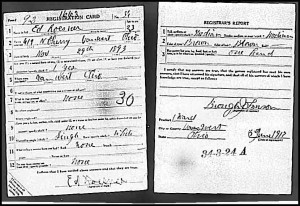
WWI Draft Registration, 12 question card, 1st Registration, transcription:
1. Name: Ed Roesner Age: 23
2. Home address: 619 N. Cherry, Van Wert, Ohio
3. Date of birth: Nov 29, 1893
4. Are you (1) Natural-born citizen, (2) a naturalized citizen, (3) an alien, (4) or have you declared your intention: 1 yes
5. Where were you born: Van Wert, Ohio
6. If not a citizen, of what country are you a citizen? Left blank
7. What is your present trade/occupation: None
8. By whom employed? Where? Left blank
9. Have you a father, mother, wife, child under 23, sister, brother under 12 solely dependent on you for support? None
10. Married or single: Single Race: White
11. What military service have you had: None
12. Do you claim exemption from draft: None
13. Tall, medium or short: Medium; Slender, medium or stout: Medium
- Color of eyes: Brown; Color of hair: Brown
- Has person lost arm, leg, hand, foot, or both eyes, or his he otherwise disabled: One hand
Signature of Registrar: Brough Johnson
Precinct, city or county, state: 1 Ward, Van Wert, Ohio
Date of registration: 5 June 1917
Edward also completed a WWII Registration Card in 1942, shown below.
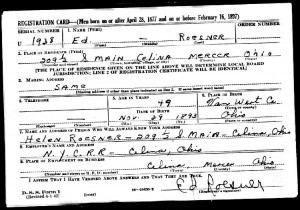
WWII Draft Registration Card, 1942
It is interesting to note that Edward’s father, Dietrich Roesner, was also involved in the transportation industry. In 1882-1883 he was a boatman on the Wabash and Erie Canal in northeast Indiana. It is also ironic that the advent of the railroad system pretty much put an end to the canal system in this country. And the Roesners were part of both of these means of transportation.







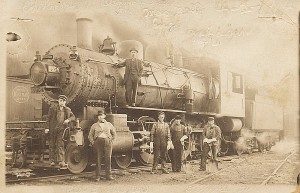
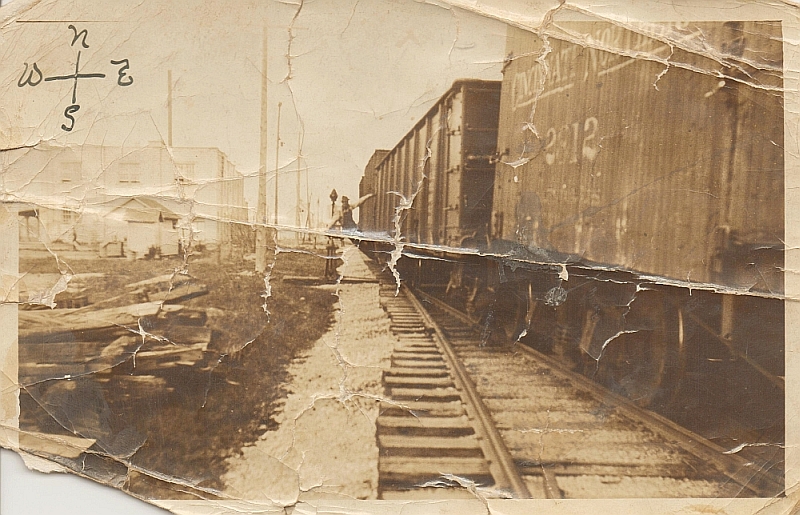
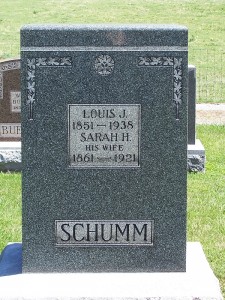
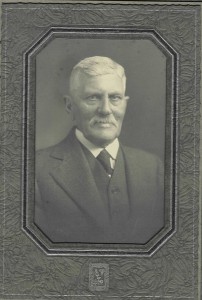
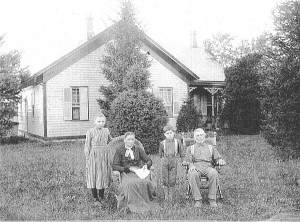
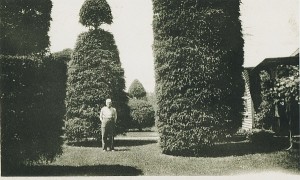
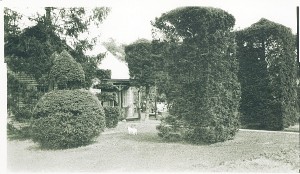

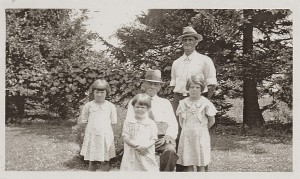
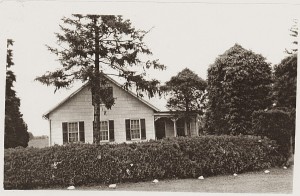

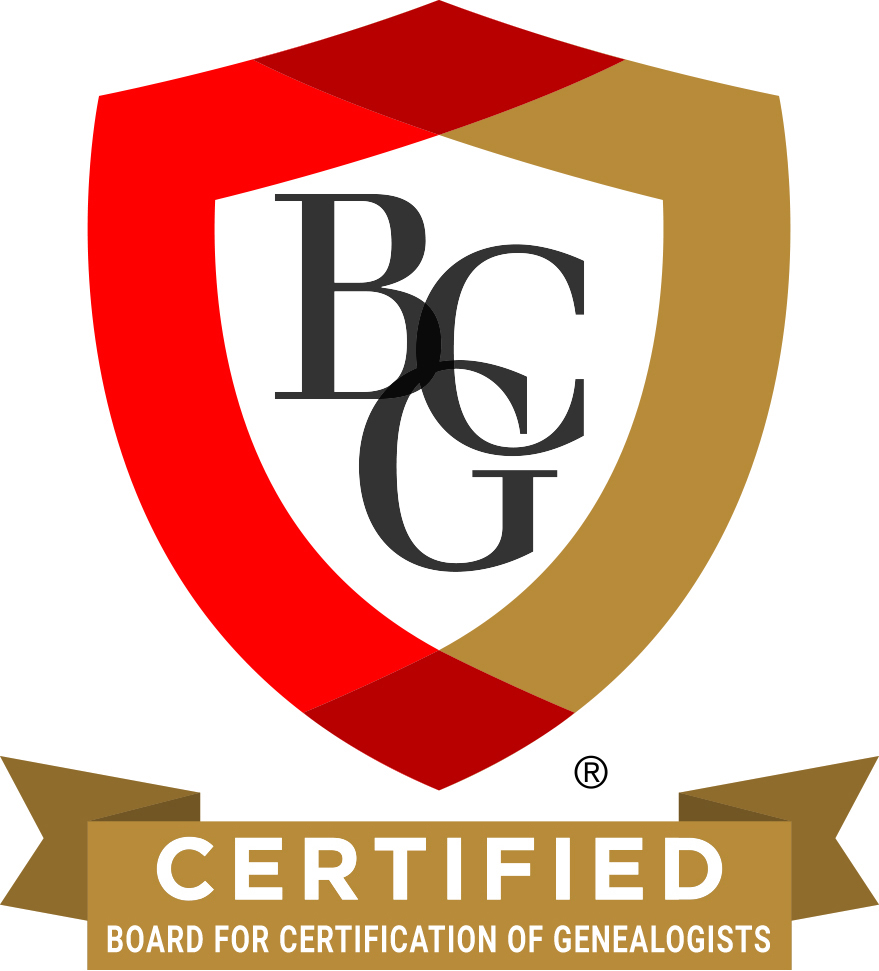
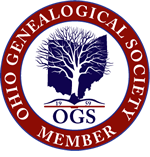

Unusual names for sure. I wish I knew why he picked those names. Liking geography is a good possibility. Thanks…
His father must have really liked geography to name his children after states. Very unusual names!
Thank you, Gloria. Great to hear from you and wishing you a nice spring and summer as well.
Thank you Karen. It was great to see them in their younger years. I always find your articles so interesting.…
What a story! I knew Henry Kissinger was in the 84th but have not corresponded with anyone connected to him.…